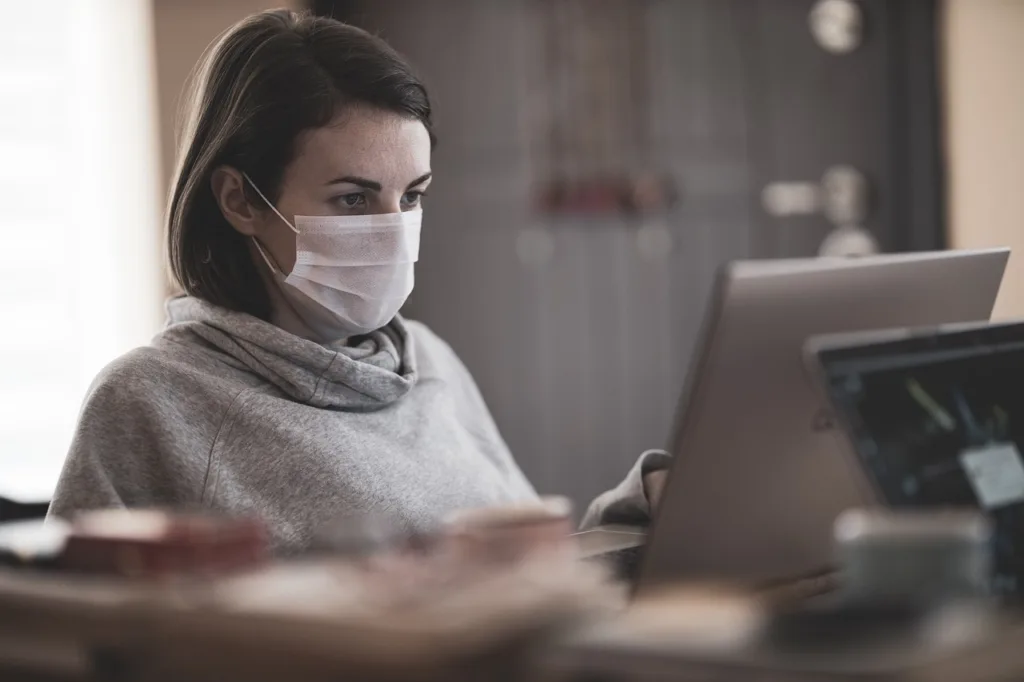Table of Contents
Can I Go to Work if My Child Has Hand Foot and Mouth?
Hand, foot, and mouth disease (HFMD) is a viral illness caused by a group of viruses called enteroviruses, most commonly coxsackievirus A16 and enterovirus 71. It mainly affects infants and children under five years of age, but can also affect older children and adults. The disease is characterized by fever, sores in the mouth, and a rash on the hands, feet, and sometimes the buttocks.
The contagious nature of the disease raises the question of whether parents can go to work if their child has HFMD. In this article, we will provide a detailed overview of the disease, its transmission, and the implications for parents who need to balance work and childcare responsibilities.
1. What is Hand, Foot, and Mouth Disease?
HFMD is a common viral illness that usually affects infants and children under five years of age. It is caused by enteroviruses, which are highly contagious and can be spread from person to person through close contact. The disease is characterized by fever, sores in the mouth, and a rash on the hands, feet, and sometimes the buttocks.
2. Symptoms of HFMD
The symptoms of HFMD typically start with a fever, followed by a sore throat, and sores in the mouth. The sores may be painful and can make it difficult to eat or drink. A rash may also develop on the hands, feet, and sometimes the buttocks. The rash may be flat or raised and can be red or pink in color.
3. How is HFMD Transmitted?
HFMD is highly contagious and can be spread from person to person through close contact. The virus is found in the saliva, fluid in the blisters, and feces of infected individuals. It can be spread through coughing, sneezing, or contact with contaminated surfaces, such as toys, doorknobs, and utensils.
4. Who is at Risk of HFMD?
Children under five years of age are most at risk of developing HFMD. However, older children and adults can also be affected, especially if they have a weakened immune system. Individuals who have close contact with infected individuals, such as family members, caregivers, and healthcare workers, are also at risk.
5. Diagnosis of HFMD
Diagnosis of HFMD is usually based on the symptoms and a physical examination. A healthcare provider may also take a swab of the sores in the mouth or blisters on the skin to confirm the presence of the virus.

6. Treatment for HFMD
There is no specific treatment for HFMD. The illness usually resolves on its own within seven to ten days. Over-the-counter pain relievers, such as acetaminophen or ibuprofen, can help relieve fever and discomfort. Drinking plenty of fluids and eating soft foods can also help manage symptoms.
7. Prevention of HFMD
The best way to prevent the spread of HFMD is to practice good hygiene. This includes washing hands frequently with soap and water, especially after changing diapers, using the bathroom, and before eating or preparing food. Avoiding close contact with individuals who are infected with HFMD is also important.

Can Parents Go to Work if their Child has HFMD?
The decision of whether to go to work when a child has HFMD depends on several factors, including the severity of the child’s illness, the type of work the parent does, and the risk of transmitting the disease to others. In general, it is recommended that parents keep their child at home until they have recovered and are no longer contagious.
1. What are the Risks of Going to Work with a Child who has HFMD?
Going to work with a child who has HFMD poses several risks, including the risk of transmitting the disease to co-workers, customers, and other individuals. This can lead to further spread of the disease, which can be particularly dangerous for individuals with weakened immune systems.
2. What are the Alternatives to Going to Work?
If a parent cannot go to work due to caring for a child with HFMD, there are several alternatives they can consider. These include working from home, taking sick leave or vacation time, or arranging for alternative childcare options.
3. How Long does HFMD Last?
HFMD usually lasts for seven to ten days, although symptoms may persist for longer in some cases. It is important to keep the child at home until they have fully recovered and are no longer contagious.
4. Can a Person get HFMD More than Once?
It is possible for a person to get HFMD more than once, as there are several different strains of the virus that can cause the illness. However, once a person has been infected with a particular strain of the virus, they usually develop immunity to that strain.
Conclusion
HFMD is a common viral illness that can be highly contagious. Parents who need to balance work and childcare responsibilities should be aware of the risks of transmitting the disease to others and take appropriate precautions. Keeping the child at home until they have fully recovered and practicing good hygiene can help prevent the spread of the disease.
F.A.Q.
HFMD is usually a mild illness that resolves on its own within seven to ten days. However, in some cases, it can lead to complications such as dehydration or meningitis.
Yes, adults can get HFMD, although it is more common in children under five years of age.
A person with HFMD is usually contagious for about a week after symptoms begin.
There is currently no vaccine available to prevent HFMD.
If you suspect your child has HFMD, contact your healthcare provider for advice on how to manage their symptoms and prevent the spread of the disease.
Chart 1
This is a chart outlining steps parents can take for prevention and removal of hand, foot, and mouth disease (HFMD) in children:
| Steps for Prevention of HFMD | Steps for Removal of HFMD |
|---|---|
| 1. Wash hands frequently with soap and water | 1. Keep your child at home to prevent spreading the virus to others |
| 2. Avoid close contact with people who have HFMD | 2. Encourage your child to drink plenty of fluids to prevent dehydration |
| 3. Disinfect frequently touched surfaces and toys | 3. Use over-the-counter pain relievers, such as acetaminophen, to reduce fever and discomfort |
| 4. Teach your child to cover their mouth and nose when coughing or sneezing | 4. Apply a soothing ointment or cream to the blisters to reduce itching and pain |
| 5. Avoid sharing utensils, cups, and towels | 5. Gently clean blisters with mild soap and water, and avoid popping them |
| 6. Keep your child’s nails trimmed to prevent scratching and spreading the virus | 6. Consult your healthcare provider if your child’s symptoms persist or worsen |
| 7. Monitor your child’s symptoms and keep them home if they are ill | 7. Keep your child at home until they are no longer contagious to prevent spreading the virus to others |
Chart 2
| Steps to Take When Missing Work Due to Child’s HFMD |
|---|
| 1. Notify your employer as soon as possible that you need to take time off to care for your sick child |
| 2. Discuss options with your employer, such as working from home or taking sick leave, if available |
| 3. Arrange for alternative childcare if needed, such as a trusted family member or friend |
| 4. Keep your child comfortable and monitor their symptoms closely |
| 5. Follow the prevention and removal steps outlined in the previous chart to help your child recover and prevent the spread of the virus to others |
| 6. Consult your healthcare provider if your child’s symptoms persist or worsen |
| 7. Stay in communication with your employer about your child’s progress and when you anticipate returning to work. |
FOR MORE VALUABLE TIPS BUY OUR PARENTING COURSES AT https://www.kidzoot.com/courses/
CONSULT YOUR PERSONAL PARENTING SOLUTIONS VIA APPOINTINTMENT AT https://www.kidzoot.com/appointment-booking/
Follow Us on Twitter www.twitter.com/kidzootworld

